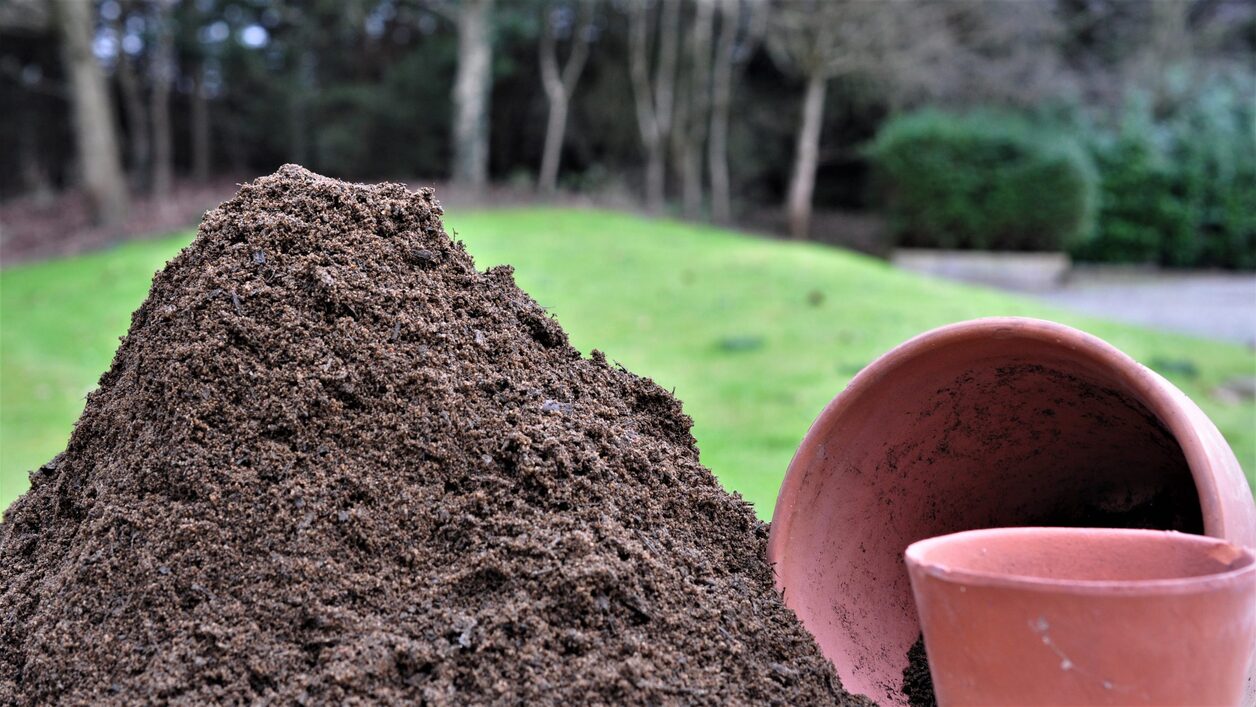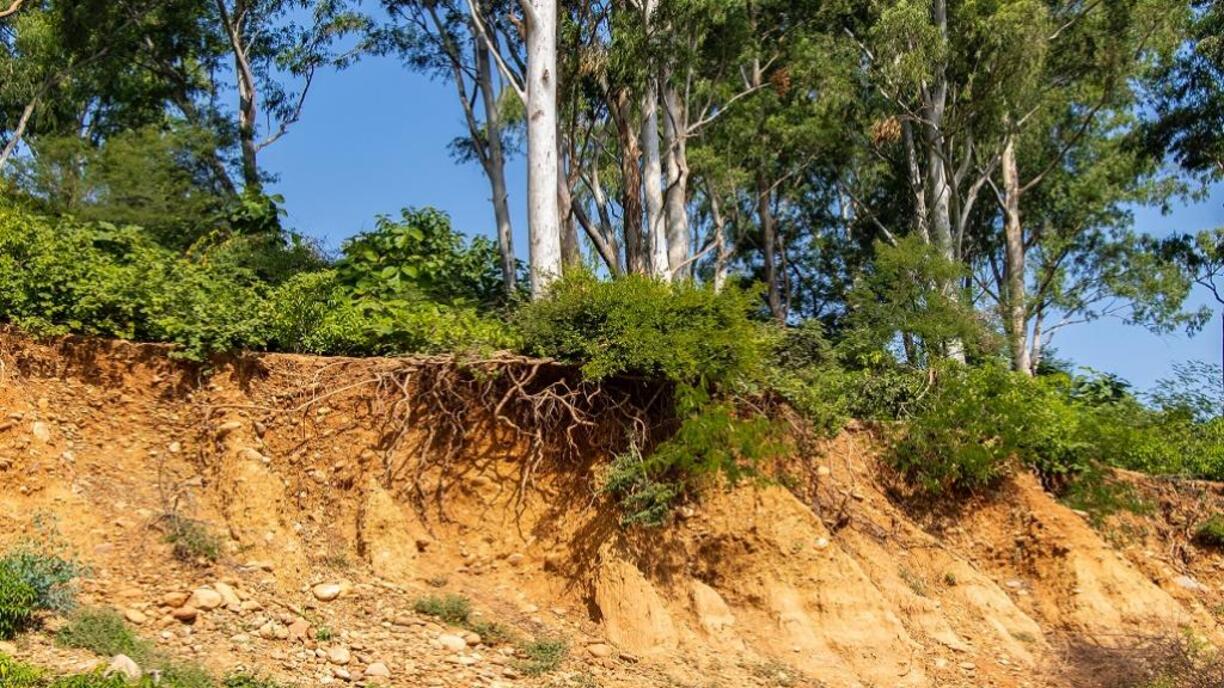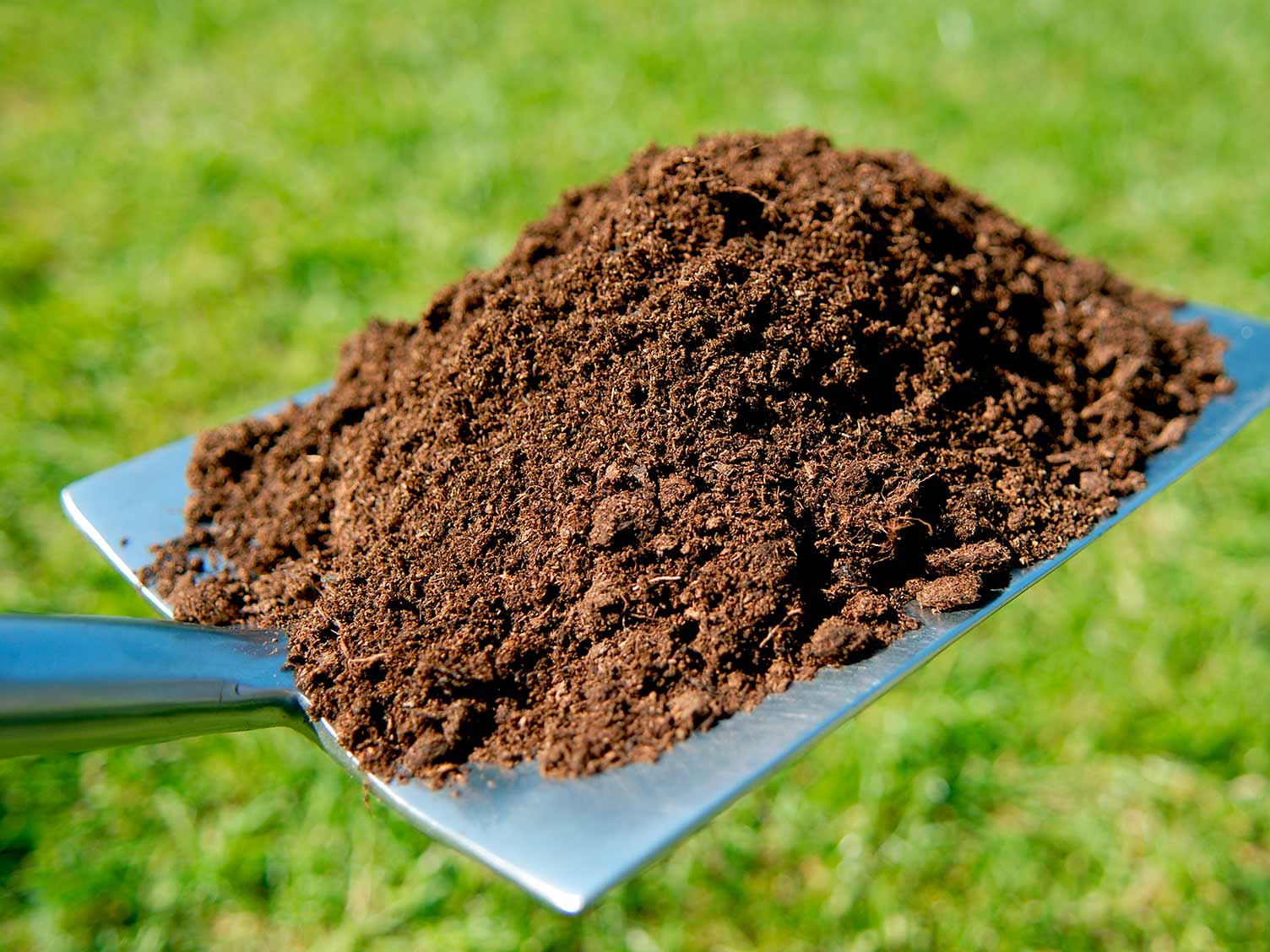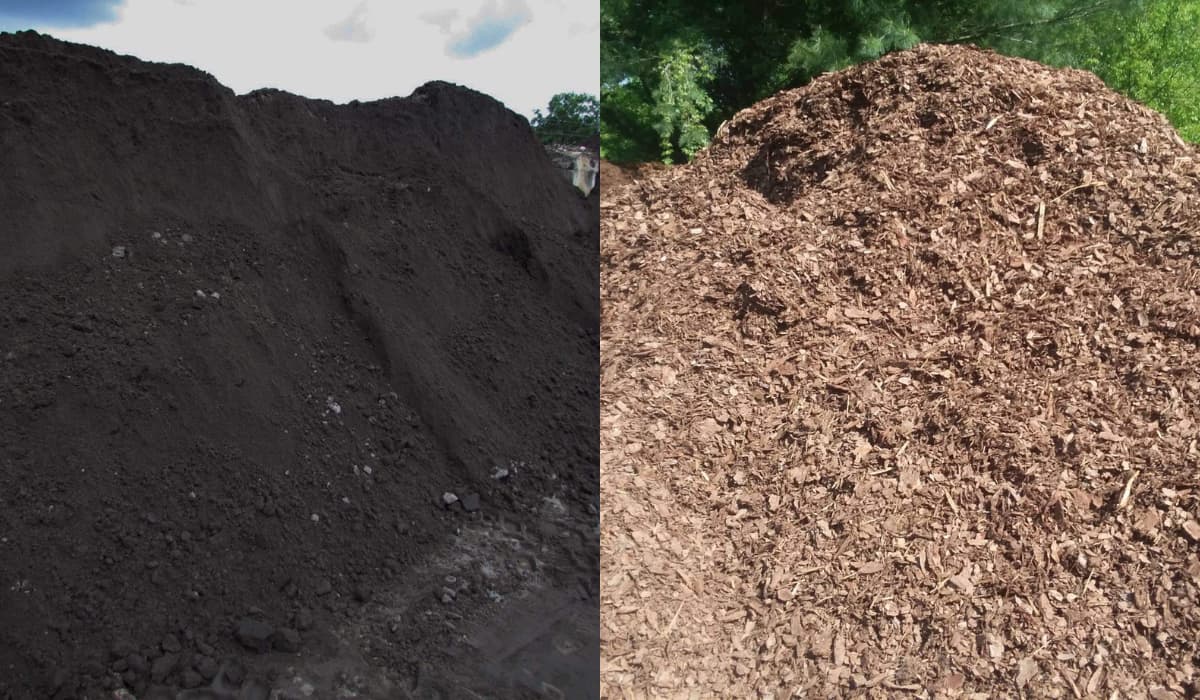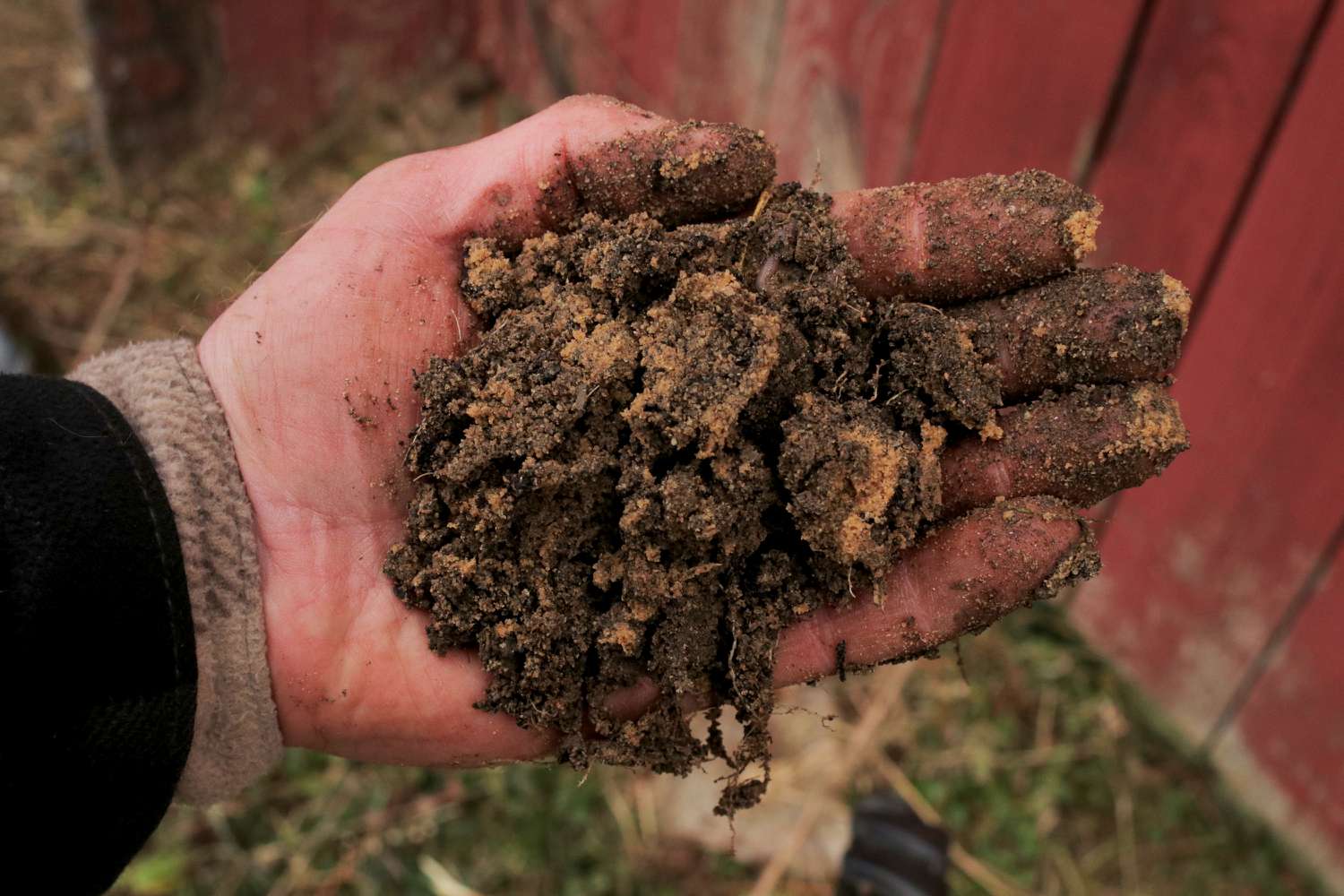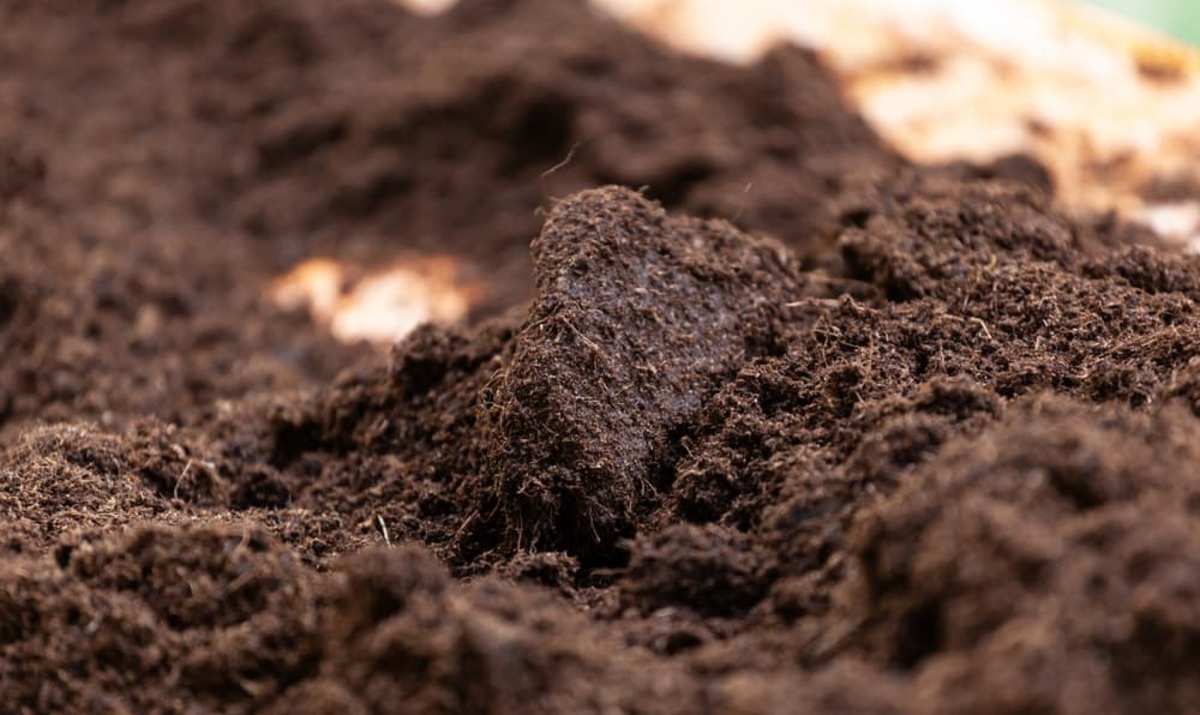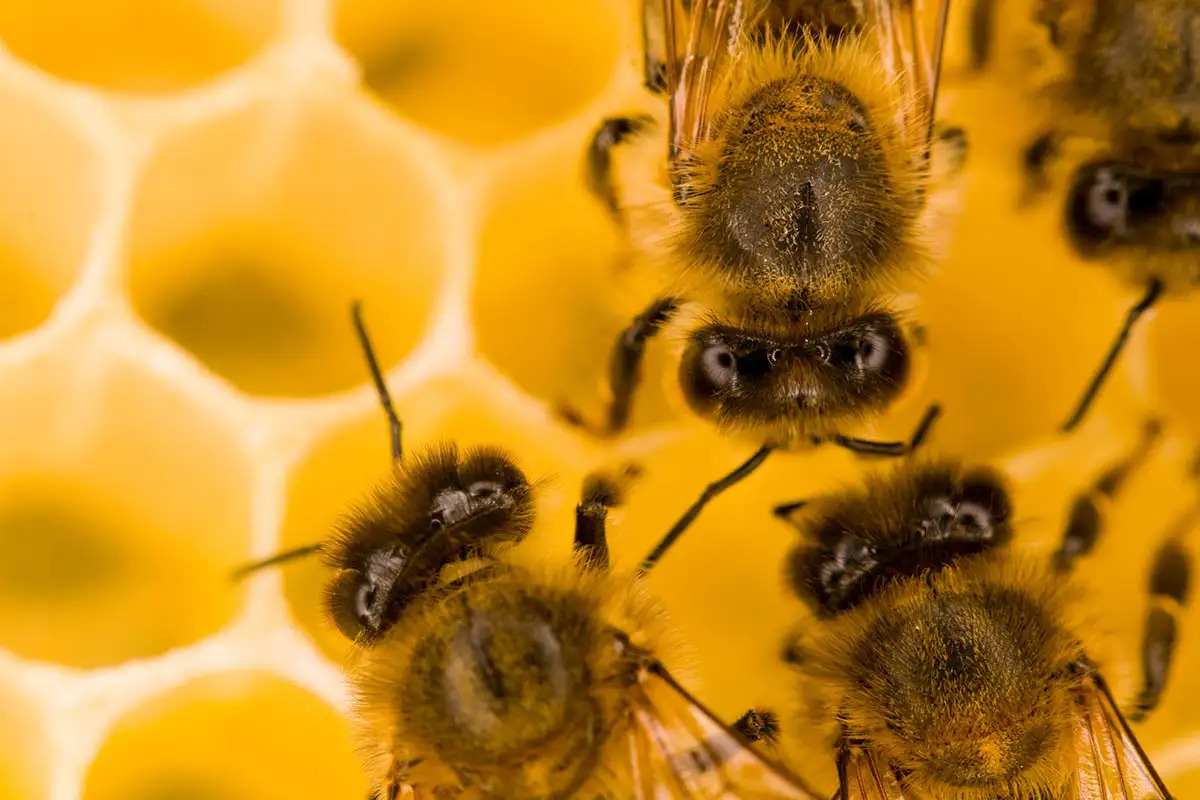Home>Gardening Basics>Understanding Soil>What Makes Up Loam Or Topsoil?
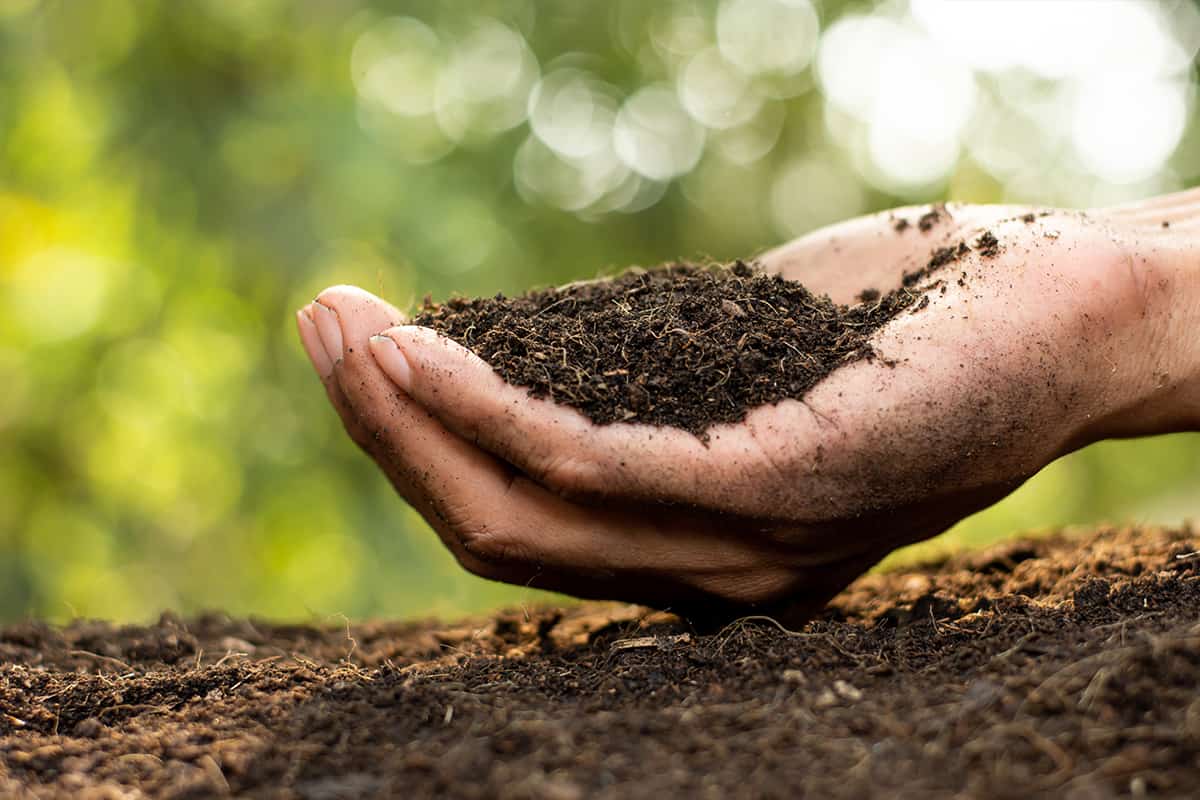

Understanding Soil
What Makes Up Loam Or Topsoil?
Modified: February 10, 2024
Discover what makes up loam or topsoil and gain a deeper understanding of soil composition. Explore the key elements that contribute to healthy soil for successful gardening.
(Many of the links in this article redirect to a specific reviewed product. Your purchase of these products through affiliate links helps to generate commission for Chicagolandgardening.com, at no extra cost. Learn more)
Table of Contents
Introduction
Welcome to the fascinating world of soil! In the realm of gardening and agriculture, soil plays a crucial role in determining the success of plant growth. There are various types of soil, each with its own unique characteristics and qualities. One type that stands out for its exceptional properties is loam or topsoil. Understanding the composition and attributes of loam or topsoil is essential for anyone seeking to optimize plant health and productivity.
Loam or topsoil refers to a type of soil that combines the best qualities of three primary soil types: sand, silt, and clay. It is often referred to as the perfect soil because of its balanced composition, rich nutrient content, and excellent water drainage capabilities. Gardeners and farmers consider loam or topsoil as a valuable asset due to its ability to promote strong root development and sustain healthy plant growth.
In this article, we will delve into the composition of loam or topsoil, exploring its organic matter, mineral particles, water holding capacity, drainage abilities, nutrient content, and pH level. By understanding the intricacies of this soil type, you will be better equipped to create the ideal conditions for your plants to thrive.
Definition of Loam and Topsoil
Loam and topsoil are terms often used interchangeably to describe a particular type of soil that is highly fertile and ideal for plant growth. While they have similar properties, there are subtle differences in their definitions.
Loam is a soil type that combines equal parts of sand, silt, and clay, resulting in a well-balanced soil structure. The blend of these three soil particles creates a loose and crumbly texture that allows for proper aeration and water drainage. Loam soils are renowned for their ability to retain moisture while still maintaining good drainage.
On the other hand, topsoil refers to the uppermost layer of soil, typically ranging from 2 to 8 inches in depth, where most plant roots are concentrated. Topsoil is the layer that contains the highest concentration of organic matter and nutrients, making it vital for plant growth. It is often considered the most fertile layer of soil.
While loam is technically a specific type of soil, topsoil refers to the location within the soil profile. However, due to their similar characteristics, the terms loam and topsoil are often used interchangeably. Both loam and topsoil are known for their rich nutrient content and suitability for cultivating a wide range of plants.
Loam or topsoil is prized by gardeners and farmers because of its ability to provide the optimal growing environment for plants. It offers a unique combination of factors, such as nutrient availability, water retention, and aeration, that contribute to healthy root development and robust plant growth.
Now that we have established the definitions of loam and topsoil, let’s explore the composition of this remarkable soil type and understand the factors that make it so desirable for gardening and agriculture.
Composition of Loam or Topsoil
The composition of loam or topsoil is what sets it apart from other soil types. It consists of two main components: organic matter and mineral particles.
Organic Matter:
One of the distinguishing features of loam or topsoil is its high organic matter content. Organic matter refers to the decomposed plant and animal materials present in the soil. It includes things like dead leaves, plant roots, and other organic debris. The decomposing organic matter enriches the soil by releasing essential nutrients and improving its structure.
The presence of organic matter in loam or topsoil is crucial for several reasons. First, it enhances the soil’s ability to hold water, providing a consistent and adequate water supply to plants. Second, it improves soil structure by promoting the formation of aggregates, which allows for better root penetration and aeration. Lastly, organic matter acts as a nutrient reservoir, slowly releasing essential elements that plants need for growth.
Mineral Particles:
The mineral particles in loam or topsoil are a combination of sand, silt, and clay. Each of these particles contributes to the overall texture and characteristics of the soil.
– Sand particles are the largest and feel gritty to the touch. They provide ample spaces between particles, allowing water to drain freely and ensuring good aeration. However, sandy soil tends to have a lower water-holding capacity and may require more frequent irrigation.
– Silt particles are smaller than sand but larger than clay. They have a smooth, flour-like texture. Silt contributes to the soil’s ability to retain moisture and nutrients. It helps to create a more stable soil structure and improve water filtration.
– Clay particles are the smallest and have a sticky texture when wet. They provide excellent water-holding capacity but can also become compacted, leading to drainage issues. Clay particles contribute to the soil’s nutrient-retaining capabilities but may require amendments to improve drainage and aeration.
The combination of these mineral particles in loam or topsoil results in a well-balanced texture. It ensures adequate water retention while allowing excess water to drain, preventing waterlogged conditions that can harm plant roots.
Understanding the composition of loam or topsoil is fundamental to creating the right environment for plants to thrive. In the next sections, we will explore the water holding capacity, drainage abilities, nutrient content, and pH level of loam or topsoil to further grasp its unique qualities.
Organic Matter
Organic matter is a crucial component of loam or topsoil and plays a significant role in the health and fertility of the soil. It is derived from decomposed plant and animal materials and encompasses a wide range of organic substances, including dead plant roots, leaves, stems, and animal waste.
The presence of organic matter in loam or topsoil offers several benefits for plant growth:
1. Nutrient Availability: Organic matter acts as a reservoir for essential nutrients such as nitrogen, phosphorus, and potassium. As the organic matter decomposes, these nutrients are released into the soil, making them readily available for plant uptake. This nutrient-rich environment promotes healthy growth and development.
2. Soil Structure: Organic matter improves soil structure by enhancing the formation of aggregates. These aggregates create pore spaces within the soil, allowing for better air circulation and root penetration. The improved soil structure facilitates water infiltration and drainage, preventing waterlogging and promoting healthy root growth.
3. Water Holding Capacity: Loam or topsoil with higher organic matter content has an increased ability to retain water. The organic matter acts like a sponge, absorbing and holding onto water, making it available to plants during drier periods. This water-holding capacity helps to sustain plant growth, even in times of limited rainfall or irrigation.
4. Microbial Activity: Organic matter is a food source for soil microorganisms such as bacteria, fungi, and earthworms. These microorganisms play a vital role in breaking down organic matter further, releasing nutrients and creating a nutrient cycling system within the soil. This microbial activity enhances soil fertility and improves overall soil health.
To maintain and increase organic matter content in loam or topsoil, gardeners and farmers can incorporate various practices:
– Adding organic amendments such as compost, well-rotted manure, or leaf litter can increase organic matter levels in the soil over time.
– Implementing cover cropping, where specific plants are grown and then cut back and left on the soil surface to decompose, can add organic matter and provide additional benefits such as weed suppression and erosion control.
– Avoiding excessive tillage, as it can accelerate the decomposition of organic matter and lead to a decline in organic matter content over time.
Incorporating these practices helps to maintain and enhance the organic matter content of the soil, ensuring a healthy and fertile growing environment for plants.
Mineral Particles
The mineral particles in loam or topsoil consist of sand, silt, and clay, and each plays a significant role in determining the soil’s texture, drainage capabilities, and nutrient-holding capacity.
Sand: Sand particles are the largest mineral particles found in loam or topsoil. They have a gritty texture and are visible to the naked eye. The presence of sand contributes to the soil’s overall structure and influences its drainage capabilities. Soil with a higher proportion of sand particles tends to have good drainage, allowing excess water to percolate through the soil easily. However, sandy soil also has lower water-holding capacity, which can lead to more frequent irrigation requirements.
Silt: Silt particles are smaller than sand particles and have a smooth, flour-like texture. They are intermediate in size between sand and clay particles. Silt contributes to the soil’s ability to retain moisture and nutrients. It helps to improve the soil’s water-holding capacity while still allowing for adequate drainage. Soils with a higher silt content tend to be more fertile and hold nutrients better than sandy or clay soils.
Clay: Clay particles are the smallest mineral particles found in loam or topsoil. They have a sticky texture when wet and are barely visible to the naked eye. Clay particles have a strong affinity for water and have a high water-holding capacity. This can be both beneficial and challenging. On one hand, clay soil retains moisture well, providing a consistent water supply for plants. However, it can also become easily compacted, reducing aeration and drainage, which can lead to waterlogging. Amendments and proper management practices can help improve clay soils’ drainage and aeration, making them more suitable for plant growth.
The combination of these mineral particles in loam or topsoil creates a well-balanced texture. The larger sand particles provide spaces for air circulation and water drainage, while the finer silt and clay particles help retain moisture and nutrients. This balanced combination allows for adequate water drainage without excessive water loss, ensuring optimal conditions for plant roots to access water and nutrients.
Gardeners and farmers can assess the mineral composition of their soil through simple tests or by observing the soil’s texture and behavior. By understanding the mineral particle composition, appropriate soil management practices, such as amendments or water management strategies, can be implemented to improve the soil’s structure and overall fertility.
Water Holding Capacity
The water-holding capacity of loam or topsoil is a key characteristic that determines its ability to retain moisture and provide a consistent water supply to plants. It is influenced by factors such as soil texture, organic matter content, and pore space within the soil.
The texture of the soil plays a significant role in its water-holding capacity. Loam or topsoil, with its balanced composition of sand, silt, and clay particles, has an optimal water-holding capacity. The larger particles of sand create larger spaces between them, allowing water to drain freely. The smaller silt and clay particles, on the other hand, have a greater surface area that retains water. This combination ensures a balance between drainage and water retention.
In addition to soil texture, the presence of organic matter in loam or topsoil also enhances its water-holding capacity. Organic matter acts like a sponge, absorbing and holding onto water. It increases the soil’s ability to retain moisture and provides plants with a reserve of water during drier periods. Soils with higher organic matter content generally have a greater water-holding capacity.
The pore space within the soil also contributes to its water-holding capacity. Pore spaces are the gaps between soil particles where air and water reside. In loam or topsoil, the balance between the different-sized particles creates a suitable pore space. These pore spaces allow for water to infiltrate the soil and be stored for plant use. The arrangement of particles and pore spaces also affects the drainage capabilities of the soil, preventing waterlogging and ensuring proper aeration for plant roots.
Factors such as compaction and soil structure can have an impact on the water-holding capacity of loam or topsoil. When the soil becomes compacted, the pore spaces are reduced, reducing the soil’s ability to hold water. This can result in poor drainage and limited water availability for plant roots.
To optimize the water-holding capacity of loam or topsoil, gardeners and farmers can employ several strategies:
– Incorporate organic matter: Adding compost, well-aged manure, or other organic amendments increases the soil’s water-holding capacity by improving its structure and increasing the availability of pore spaces.
– Mulching: Applying mulch, such as shredded leaves, straw, or wood chips, on the soil surface helps to reduce water evaporation, prevents soil erosion, and moderates soil temperatures. Mulch retains moisture in the soil, enhancing its water-holding capacity.
– Proper irrigation practices: Watering plants deeply and infrequently, allowing the water to penetrate the soil and reach the root zone, promotes deeper root growth and increases the soil’s water-holding capacity.
By understanding and managing the water-holding capacity of loam or topsoil, gardeners and farmers can ensure that plants have a consistent water supply for optimal growth and health.
Drainage
Drainage is a critical aspect of loam or topsoil that influences the movement of water through the soil profile. Proper drainage is essential for maintaining a healthy root environment by preventing waterlogging and ensuring adequate oxygen supply to plant roots.
The drainage capabilities of loam or topsoil are primarily determined by the soil texture and structure. The well-balanced composition of sand, silt, and clay particles in loam soils promotes good drainage. The larger sand particles create larger spaces between them, allowing water to flow through the soil more freely. On the other hand, the smaller silt and clay particles help retain some moisture while maintaining adequate pore spaces for water movement.
In addition to soil texture, the soil structure also plays a crucial role in drainage. A well-structured soil, with good aggregation and pore spaces, allows water to infiltrate and flow through the soil profile. Conversely, compacted soil or poor soil structure can impede water movement, leading to drainage issues.
Overly compacted soil can result from heavy foot traffic, excessive tilling, or the use of heavy machinery on the soil. Compacted soil has reduced pore spaces, limiting the movement of water through the soil. This can lead to water pooling on the soil surface or causing waterlogged conditions, which can suffocate plant roots and promote the growth of disease-causing pathogens.
To improve drainage in loam or topsoil, gardeners and farmers can employ various techniques:
– Amending the soil: Adding organic matter, such as compost, can improve soil structure and increase pore spaces, facilitating better water drainage.
– Avoiding overwatering: Proper irrigation practices, such as watering deeply and infrequently, allow the water to penetrate the soil and encourage deeper root growth. This helps prevent water accumulation on the soil surface and promotes healthy drainage.
– Implementing proper grading and slope: Ensuring proper grading and slope in the landscape or garden beds allows excess water to flow away from the planting area, preventing waterlogging and improving overall drainage.
– Installing drainage systems: In areas prone to excess water accumulation, installing drainage systems such as French drains or drainage pipes can effectively remove excess water and prevent waterlogging of the soil.
By optimizing drainage in loam or topsoil, gardeners and farmers can create an optimal root environment, ensuring that plants receive the necessary oxygen and minimizing risks of root-related issues caused by waterlogged conditions.
Nutrient Content
The nutrient content of loam or topsoil is a critical factor that contributes to the fertility and productivity of the soil. It determines the availability of essential nutrients to plants, which are necessary for their growth, development, and overall health.
Loam or topsoil typically contains a wide range of essential plant nutrients, including macronutrients and micronutrients. Macronutrients such as nitrogen (N), phosphorus (P), and potassium (K) are required in larger quantities, while micronutrients such as iron (Fe), manganese (Mn), and zinc (Zn) are required in smaller amounts.
The nutrient content of loam or topsoil can be influenced by various factors, including the soil’s parent material, organic matter content, and previous management practices. Organic matter plays a vital role in nutrient availability, as it acts as a reservoir that slowly releases essential nutrients into the soil over time.
Furthermore, loam or topsoil with its balanced composition of sand, silt, and clay particles has the ability to retain nutrients and prevent leaching. The larger sand particles provide good drainage, reducing the risk of nutrient loss through excessive water movement. The smaller silt and clay particles have a higher cation exchange capacity (CEC), which allows them to hold onto nutrients and make them available to plants.
To assess the nutrient content of loam or topsoil, soil testing is recommended. Soil testing provides valuable information about the levels of macronutrients, micronutrients, and pH levels in the soil. Based on the soil test results, appropriate fertilization and nutrient management strategies can be implemented to ensure that plants receive the necessary nutrients for optimal growth.
Adding organic amendments such as compost, manure, or plant-based fertilizers can help replenish nutrient levels in loam or topsoil. These organic amendments not only provide a source of plant nutrients but also contribute to the overall health and fertility of the soil by enhancing microbial activity and improving soil structure.
In addition to organic amendments, the application of mineral-based fertilizers can be employed to address specific nutrient deficiencies identified through soil testing. This targeted approach ensures that plants receive the nutrients they need without overuse or waste.
Regular soil testing and nutrient management practices are essential for maintaining nutrient balance in loam or topsoil. By ensuring adequate nutrient availability, gardeners and farmers can support healthy plant growth and increase productivity in their gardens or fields.
pH Level
The pH level of loam or topsoil is a crucial factor that influences the availability of nutrients to plants. It is a measure of the soil’s acidity or alkalinity on a scale of 0 to 14. A pH value of 7 is considered neutral, below 7 is acidic, and above 7 is alkaline.
The pH level of loam or topsoil significantly impacts nutrient availability because it affects the chemical reactions and processes within the soil. Different plants have specific pH requirements for optimal growth, and a pH level that is too high or too low can hinder nutrient uptake and lead to nutrient deficiencies or toxicities.
Most plants prefer a slightly acidic to neutral pH range of 6 to 7.5. In this pH range, essential nutrients such as nitrogen (N), phosphorus (P), and potassium (K) are readily available for plant uptake. However, certain plants, such as blueberries and rhododendrons, thrive in more acidic soils, while others, like cacti, prefer more alkaline conditions.
Soil pH can be influenced by various factors, including the parent material, climate, and soil management practices. For example, soils derived from limestone parent materials tend to be more alkaline, while soils derived from granite or organic matter can be more acidic.
To determine the pH level of loam or topsoil, a soil test is recommended. Soil testing provides valuable information about the soil’s pH and can guide appropriate soil amendments to adjust the pH if necessary.
If the pH of loam or topsoil is too acidic, meaning it has a pH below the desired range, lime can be added to raise the pH and reduce acidity. Lime is a common amendment used to increase soil pH, and the amount required depends on the specific soil characteristics.
On the other hand, if the pH is too alkaline, meaning it has a pH above the desired range, amendments such as sulfur or acidifying fertilizers can be used to lower the pH and make the soil more acidic. Again, the amount of amendment required depends on the specific soil characteristics.
Maintaining the appropriate pH level in loam or topsoil is crucial for ensuring optimal nutrient availability to plants. It is essential to understand the specific pH requirements of the plants being grown and adjust the soil’s pH accordingly to create the ideal growing conditions.
Importance of Loam or Topsoil in Agriculture and Gardening
Loam or topsoil plays a vital role in agriculture and gardening due to its numerous benefits and characteristics that promote healthy plant growth and high yields. Understanding the importance of loam or topsoil helps farmers and gardeners make informed decisions related to soil management and cultivation practices.
1. Nutrient Availability: Loam or topsoil is often rich in organic matter and minerals, providing a diverse range of essential plant nutrients. These nutrients are readily available to plants, supporting their growth, flowering, and fruiting stages. The balanced nutrient content of loam or topsoil allows for optimal plant nutrition and reduces the need for excessive fertilization.
2. Water Management: Loam or topsoil has excellent water management properties. It retains moisture well while also promoting good drainage. The balanced composition of sand, silt, and clay particles ensures that the soil can hold an adequate amount of water for plant use, preventing both drought stress and waterlogging. This water management capability translates into improved plant health and reduced water requirements.
3. Root Development: The loose and well-structured nature of loam or topsoil provides an ideal environment for root development. The balanced soil composition allows roots to penetrate and spread easily, promoting strong anchorage and access to nutrients and water. Well-developed roots support vigorous plant growth, increase nutrient uptake efficiency, and enhance plant resilience to environmental stressors.
4. Soil Fertility: Loam or topsoil is known for its fertility and ability to sustain robust plant growth. The presence of organic matter helps to build soil fertility by improving soil structure, increasing nutrient availability, and fostering beneficial soil microbial activity. This fertile soil promotes optimal plant growth and enhances the sustainability of agricultural practices.
5. Versatility: Loam or topsoil is versatile and suitable for a wide range of crops and plant varieties. Its balanced composition provides a favorable growing environment for both annual and perennial plants, vegetables, fruits, flowers, and ornamental plants. This versatility allows farmers and gardeners to maximize their land use and diversify their production.
6. Environmental Sustainability: Proper management of loam or topsoil contributes to environmental sustainability. The well-structured soil creates a healthy habitat for beneficial organisms, such as earthworms and beneficial soil bacteria, that contribute to nutrient cycling and soil health. The improved water retention and drainage properties of loam or topsoil minimize water runoff and soil erosion, reducing negative impacts on nearby water bodies.
Gardeners and farmers can enhance the benefits of loam or topsoil by implementing good soil management practices. This includes regularly adding organic matter, performing soil testing to determine nutrient levels, practicing crop rotation, minimizing soil disturbance, and practicing appropriate irrigation techniques.
To conclude, loam or topsoil’s significance in agriculture and gardening cannot be overstated. Its nutrient content, water management capabilities, positive impact on root development, soil fertility, versatility, and environmental sustainability make it a valuable resource for successful plant cultivation.
Conclusion
Loam or topsoil is a remarkable soil type that offers a unique balance of properties for successful plant growth. Its composition of organic matter, mineral particles, and optimal water holding capacity and drainage make it highly beneficial in agriculture and gardening.
The presence of organic matter enriches the soil with essential nutrients, enhances soil structure, improves water-holding capacity, and fosters microbial activity. The combination of sand, silt, and clay particles in loam or topsoil creates a well-balanced texture that allows for proper water drainage while retaining sufficient moisture for plant use.
Loam or topsoil plays a vital role in agriculture and gardening by providing a fertile and favorable environment for root development, nutrient availability, and healthy plant growth. It offers versatility, supporting a wide range of crops and plant varieties.
Understanding the importance of loam or topsoil empowers farmers and gardeners to make informed decisions about soil management practices. Regular soil testing, proper amendments, and appropriate irrigation techniques contribute to maintaining the optimal nutrient content, pH level, water holding capacity, and drainage properties of loam or topsoil.
By harnessing the benefits of loam or topsoil, farmers and gardeners can create a sustainable and thriving growing environment. They can optimize plant health, productivity, and yields while minimizing environmental impacts such as water runoff and soil erosion.
So, whether you are a passionate gardener or a skilled farmer, understanding and valuing the composition and attributes of loam or topsoil will undoubtedly pave the way for successful cultivation and contribute to a greener and more abundant world.

